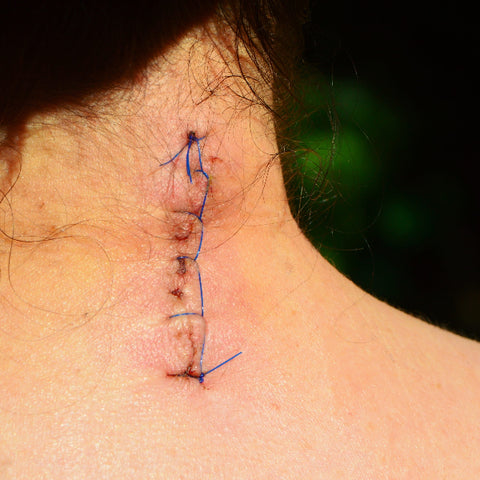How Long Can the Wounds Be Removed After the Surgery
After the surgery, the wounds need to be closed, and the general doctor will use ordinary sutures to stitch.
So after being discharged from the hospital, they will face a problem, that is: removing the stitches.
In the doctor-patient communication group, many patients will ask
After the surgery, how long can the wounds be removed?
What should I pay attention to after the stitches are removed?
Let’s listen to what the doctor said about the stitches.

How long does it take to remove stitches on surgical wounds?
"After the wound has been sutured, it must wait until the wound has healed to a certain strength before the stitches can be removed. If the stitches are removed early, the wound is easy to open; if the stitches are removed late, the sutures will compress the wound for a longer time and the scars may be more obvious. Therefore, A wound cannot be too early, and it is best not to be too late. The time for suture removal of surgical wounds is not fixed, but mainly depends on two factors: the location of the wound and the overall condition of the patient." The doctor said.
(1) The most important: wound site
When the wound can be removed, it mainly depends on what part of the body the wound is. This is because the blood supply of different parts of the human body is different, the degree of activity is different, and the tension of the wound is also different, so the time for the wound to heal to a certain safe intensity is also different.
So, for ordinary people:
The head, face, and neck have abundant blood circulation, so the stitches are removed the fastest. Usually, the stitches can be removed in 4-5 days;
The skin on the chest, back, buttocks is often thicker, so the stitching time of the abdomen should be delayed. Generally, the stitches can be removed in 7-9 days;
The skin on the abdomen and perineum is thin, and the blood circulation is abundant, so the stitches are removed quickly, which is usually about a week;
The limbs (hands, arms, legs, and feet) that we usually move the most and bear the most tension (hands, arms, legs, and feet) will have to be removed later. Generally, the stitches can be removed in about 10-12 days;
If the wound happens to be at the joint, such as in a joint replacement patient, the stitch removal will be postponed to 2 weeks.
(2) The patient's general condition
The doctor explained that the younger the wound heals faster, the older the age the slower the wound growth; the healthier the body, the better the nutrition, the faster the stitches will be removed, and so on. Therefore, clinically, for patients who are older, have underlying diseases such as diabetes or rheumatoid joints, poor nutrition, and anemia, and wasting, it is necessary to extend the time for suture removal on the basis of the normal suture removal time of the corresponding parts mentioned above. When removing the stitches, it is safe to remove the stitches with every other stitch.
What should I pay attention to after removing the stitches?
The doctor reminded that the wound does not mean that it will be fine after the stitches are removed, but the following points should be noted:
(1) Avoid strenuous exercise
For wounds, within 2 days after the stitches are removed, the wound loses the pulling effect of the sutures and is relatively easy to split. Therefore, strenuous activities should be avoided at this time.
(2) Bandaging
The wound after stitch removal has a needle eye, so it needs to be bandaged for 2 to 3 days to allow the needle eye to heal, and then the dressing can be removed.
(3) Keep the wound dry
Keep the incision dry after the stitches are removed. It is best not to get wet and bathe. Generally, after 1 to 2 weeks, when the wound has healed well and there is no redness, swelling, exudation, itching, and other uncomfortable symptoms at the incision, you can take a bath. Note that the wound should not be exposed to shower gel and can be washed with water.
(4) Avoid scratching the wound
After the scab is formed, let it fall off naturally and avoid direct contact with your hands. If the wound is itchy and uncomfortable, you can press the wound with your hands instead of scratching and irritating the wound.
In addition, intradermal sutures are used to suture the wound (beauty suture) without stitch removal. The stitch removal we are talking about now is to remove the suture of the skin surface.
The doctor reminded that the time for wound suture removal is not fixed, and the patient should follow the discharge doctor's instructions. In addition, if a wound is found to be infected and does not heal for a long time, seek medical attention in time.
